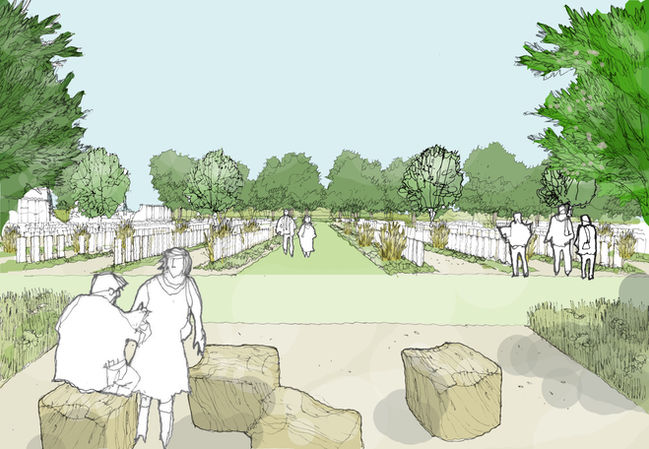Create Your First Project
Start adding your projects to your portfolio. Click on "Manage Projects" to get started
Commonwealth War Graves Commission
Location
Medjez El Bab, Tunisia; Marseille and Sangatte, France
Project Type
Public Realm
Status
In Progress
The Pioneer Sites Project
The Pioneer Sites Project marks a transformative step in the Commonwealth War Graves Commission’s (CWGC) approach to cemetery design and long-term maintenance. Focused on creating more sustainable, resilient, and locally rooted landscapes, the initiative seeks to reduce environmental impact while maintaining the dignity and purpose of CWGC sites around the world.
Early concept work at Mazargues War Cemetery in Marseille and Les Baraques Military Cemetery in Sangatte explored new models for adapting traditional cemeteries to their ecological and cultural contexts. These studies helped to shape the guiding principles of the programme - honouring the memory of the fallen while responding to the environmental realities of climate change, water scarcity, and biodiversity loss.
Now, Medjez-El-Bab War Cemetery in Tunisia becomes the first Pioneer Site to move forward into delivery.
Located in the Medjerda Valley, surrounded by olive groves and farmland, Medjez-El-Bab is the largest Commonwealth war cemetery in Tunisia and commemorates over 2,900 servicemen who died during the North Africa campaign of the Second World War. The project involves a significant transformation of the landscape, reducing irrigated lawn by over 75% and replacing it with drought-tolerant, climate-appropriate planting that reflects the local ecology and agricultural heritage.
Drawing on inspiration from the surrounding environment, the design introduces gravel gardens, native grasses, seasonal wildflowers, and orchard-style plantings of olive and almond trees. Areas between the headstones are softened with low-growing species such as thyme and lavender, while shaded avenues are enhanced with fragrant, resilient underplanting. Every intervention is guided by a commitment to biodiversity, sustainability, and respectful remembrance.
Together, these Pioneer Sites represent a new CWGC design ethos, one that is ecologically driven, historically respectful, and locally resonant. They mark a shift toward cemeteries that are not only commemorative spaces, but also environmental assets: less reliant on water, fertiliser and labour, and more integrated into their surrounding landscapes. Medjez-El-Bab will lead the way in showing how the landscapes of remembrance can adapt thoughtfully and responsibly, to a changing world.



































